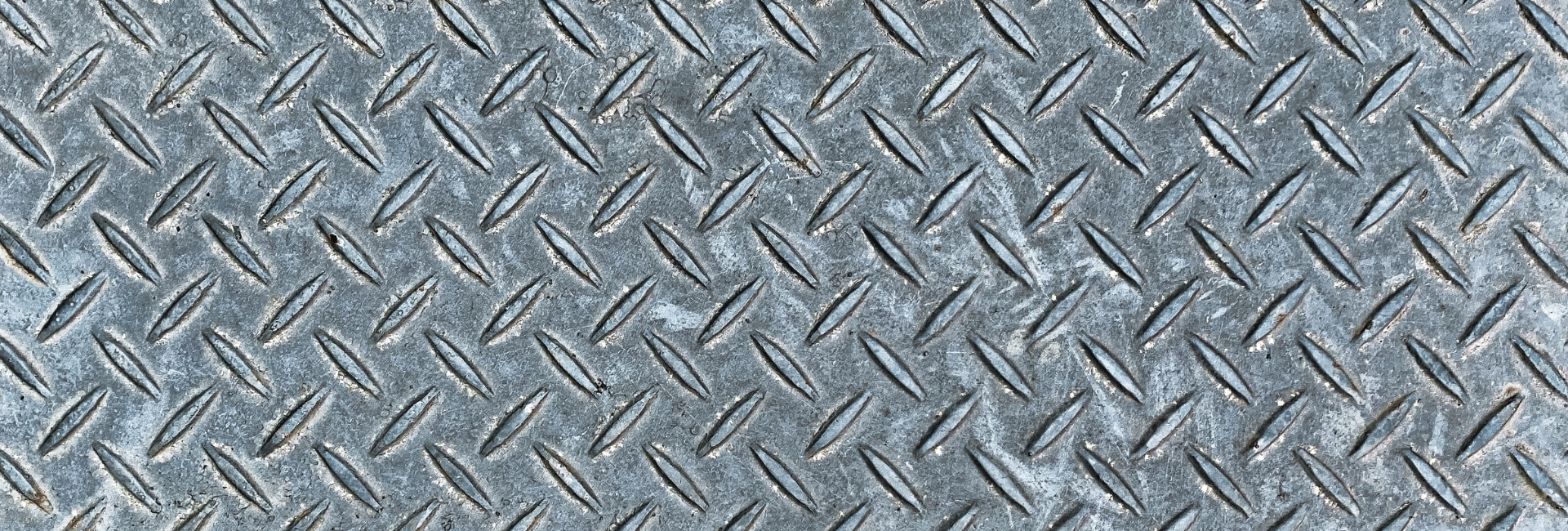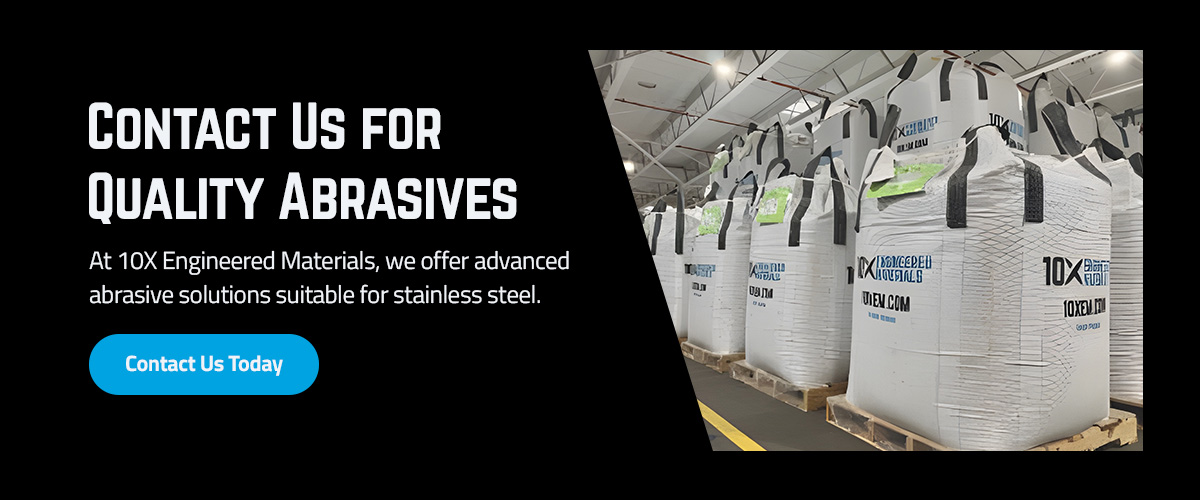Sandblasting Stainless Steel
Sandblasting is highly effective at cleaning a surface with high-velocity particles before painting or coating it. This process uses an abrasive paired with an air compressor, blasting pot, and nozzle to remove corrosion, paint, and other surface contaminants. At 10X Engineered Materials, we offer a range of sandblasting abrasives for various materials. Beyond our products, our team of dedicated professionals has the experience to provide all the information you need on sandblasting and using other abrasives.
What Is Stainless Steel?
Stainless steel is a highly common metal alloy consisting of iron, nickel, chromium, and other metals. Chromium’s presence in the alloy makes it a corrosion-resistant material.
Stainless steel is commonly used for kitchen utensils and cookware, but it has a few heavy-duty applications, including aircraft, railcars, and on some bridges. It is also used in the medical industry for surgical tools and implants since it does not rust.
Can You Sandblast Stainless Steel?
Sandblasting is a common choice for cleaning and preparing the surfaces of steel before applying a protective coating, and it is an excellent option for stainless steel as well. However, the material requires different sandblasting abrasives and techniques depending on its sensitivity to surface changes.
Manufacturers, architects, and automotive companies often sandblast stainless steel for decorative purposes or to prepare the metal for a surface finish. You can achieve different results by changing the type of abrasive you use. For instance, smaller abrasive particles leave stainless steel with a smoother finish.
Pros and Cons of Sandblasting Stainless Steel
Sandblasting stainless steel offers manufacturers and other industries many benefits, such as:
- Low-maintenance: Sandblasted stainless steel requires less maintenance thanks to the metal alloy’s corrosion-resistance properties, needing only occasional cleaning with a mild detergent to keep it looking good.
- Attractive: When done correctly, sandblasting can remove surface defects and blemishes, adding aesthetic appeal to the material.
- Durable: Sandblasting creates a profiled surface for improved adhesion when coating or painting the stainless steel, leaving you with a more durable surface.
One of the only cons associated with sandblasting stainless steel is that it requires special abrasive products. Using the incorrect abrasive or sandblasting technique may damage the surface, leading to permanent defects.
Will Sandblasted Stainless Steel Rust?
While stainless steel already has corrosion-resistance properties, some stainless steel may experience rust or corrosion, depending on the percentage of chromium in the alloy. Sandblasting is not an anti-corrosion technique, so it will not make the metal resistant to rust or corrosion. Instead, the process only prepares the surface, allowing you to apply an anti-corrosive finish. Sandblasted stainless steel may still rust or corrode if it has a low chromium content or lacks a protective coating.
Contact Us for Quality Abrasives
At 10X Engineered Materials, we offer advanced superoxalloy abrasives suitable for stainless steel. Contact us today, and our team will help you select the best product for your sandblasting applications.





